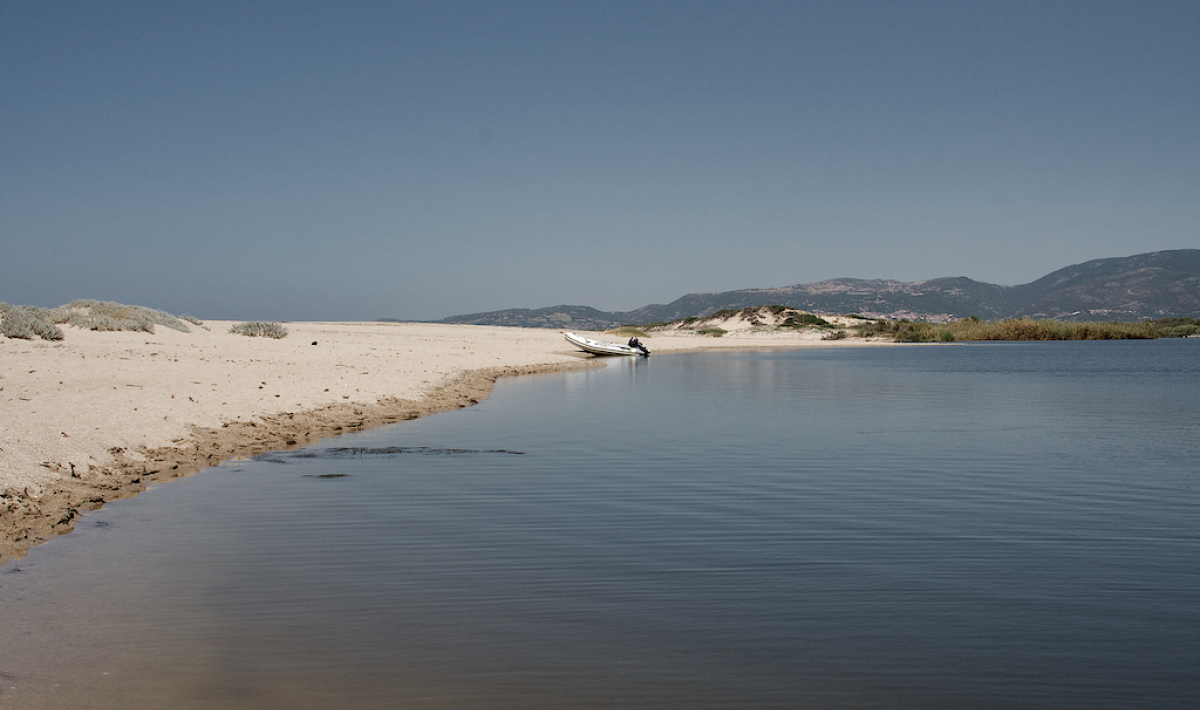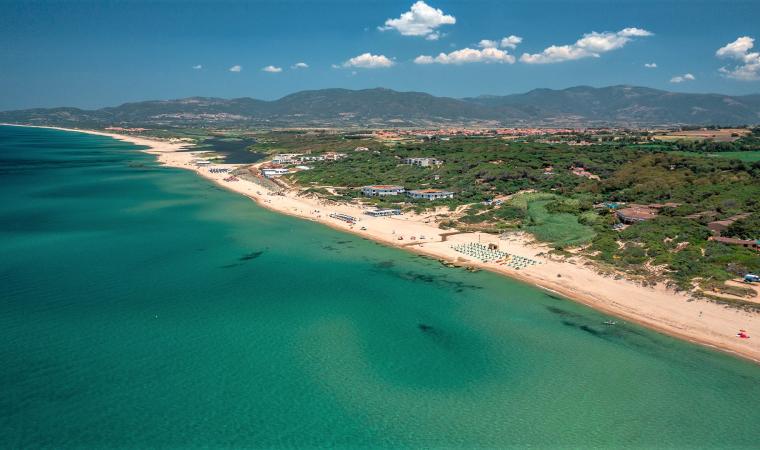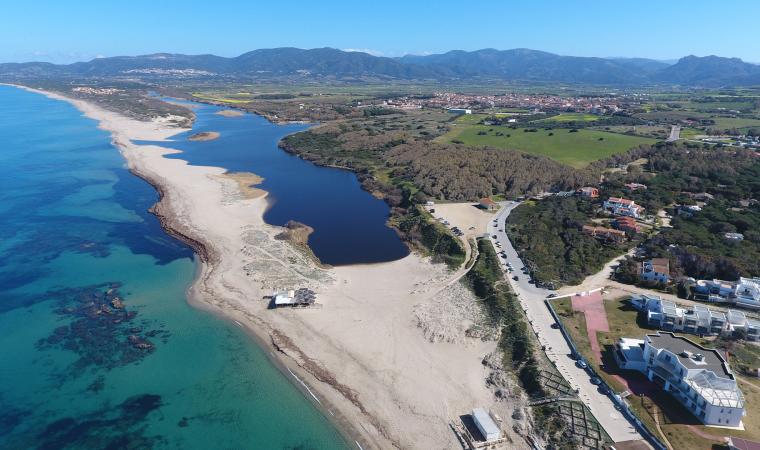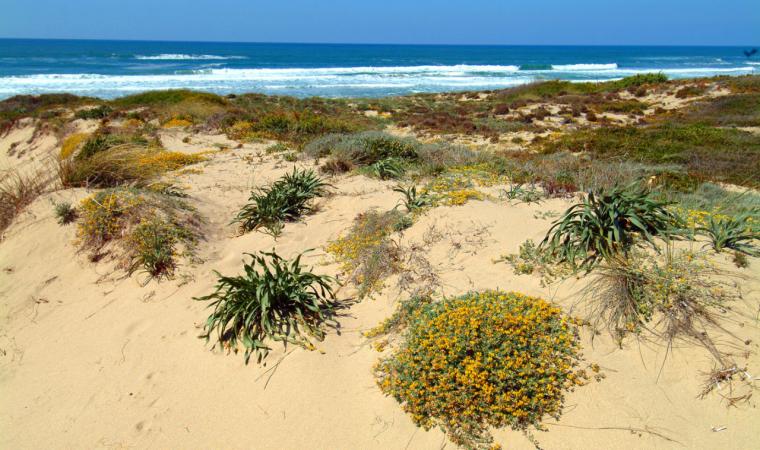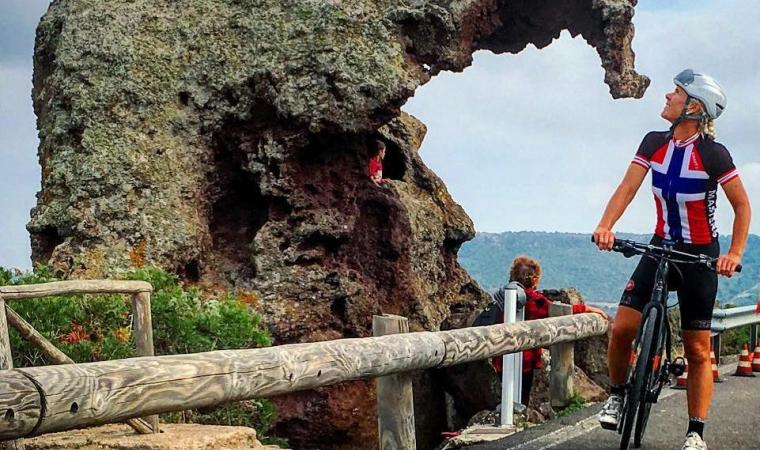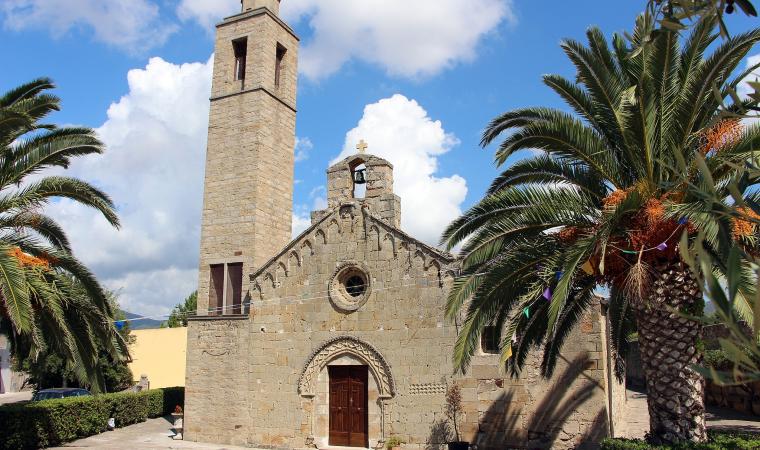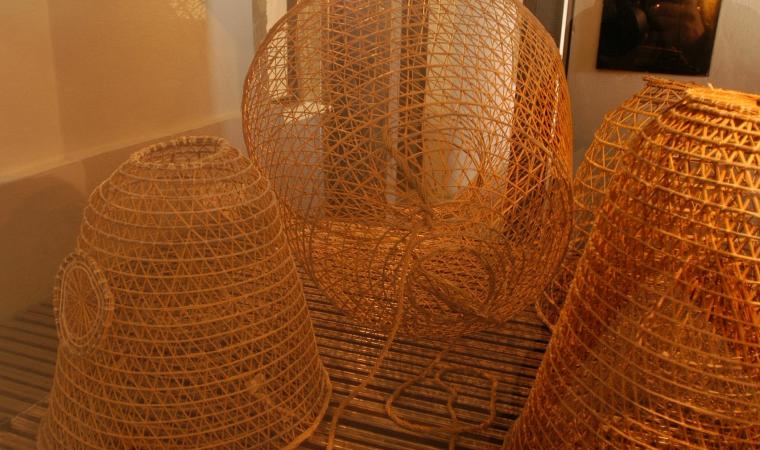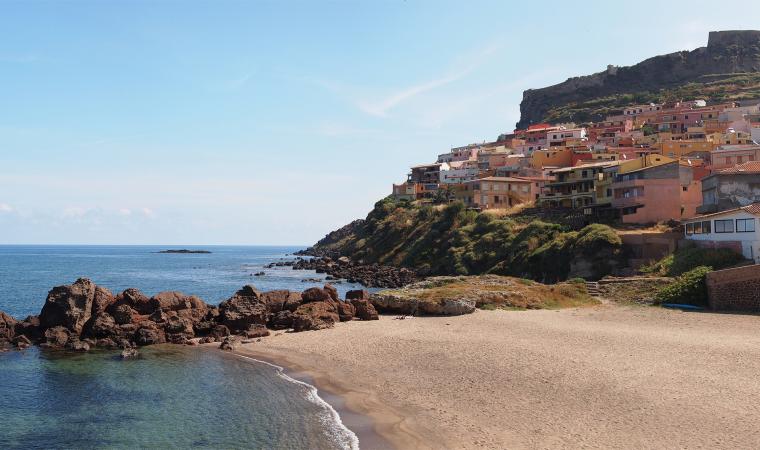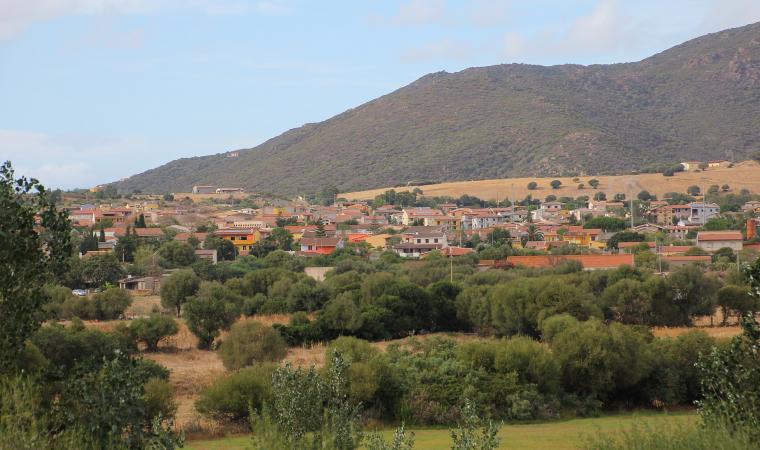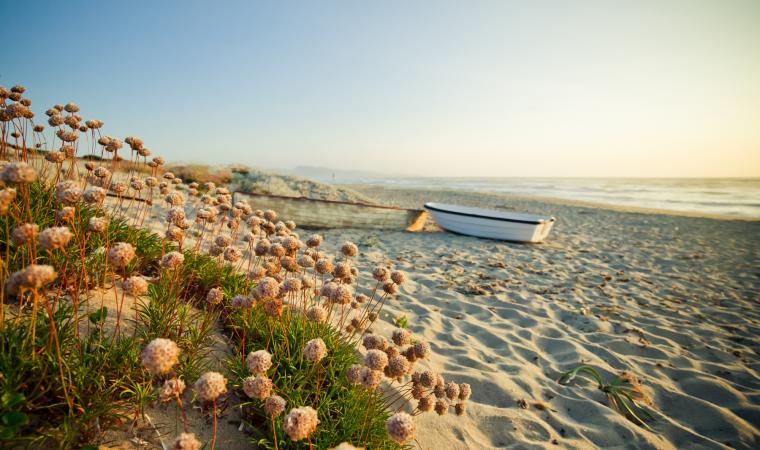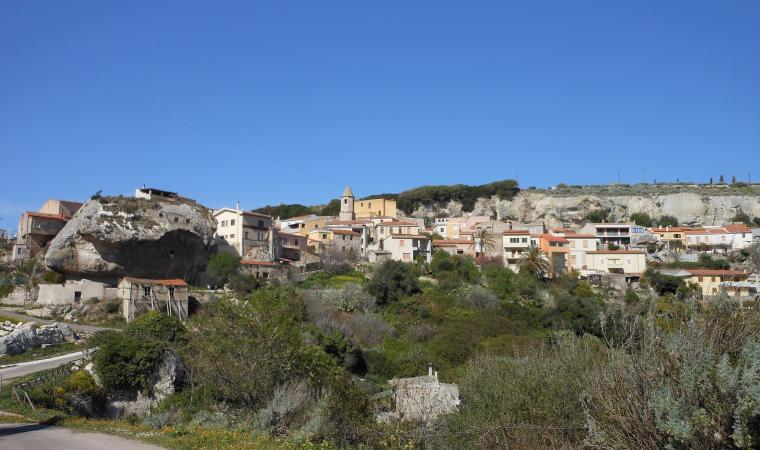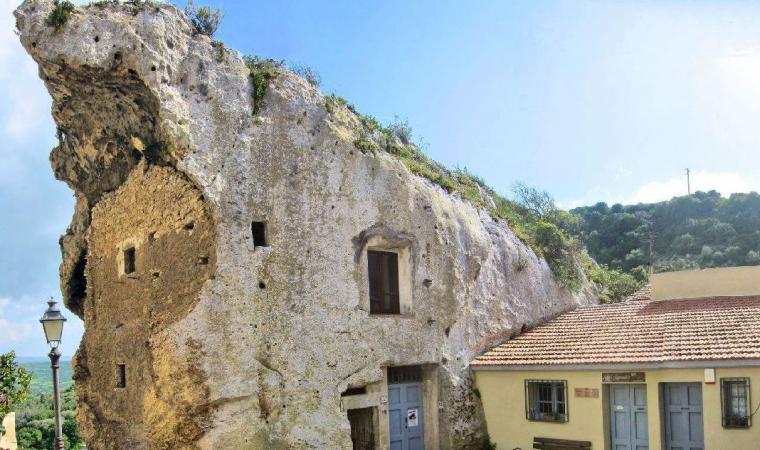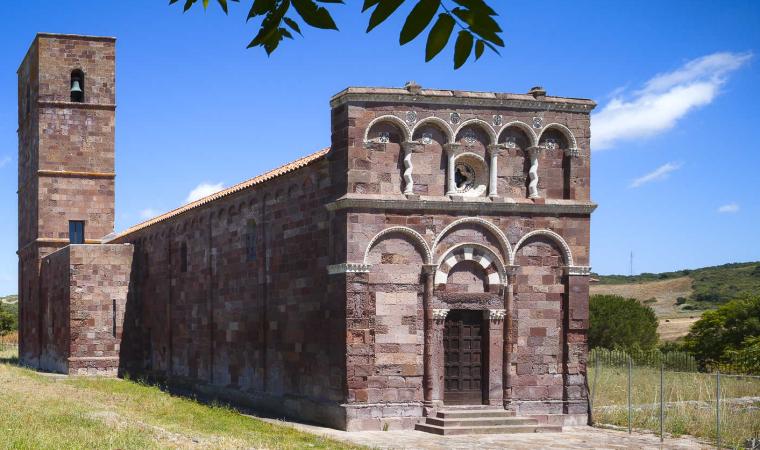The scenery is simply amazing, thanks to the chromatic contrast between the clearest of sand and the double extension of blue, of the river and the sea. The San Pietro beach is an expansive and extensive stretch of soft and golden sand, which starts from La Ciaccia to the west and reaches the east at the mouth of the Coghinas, passing by the church and the village of San Pietro a Mare, about two kilometres from the town of Valledoria. The beach is surrounded by dunes covered with Mediterranean Scrub, plunging into a crystal-clear sea of emerald green and blue, with a seabed that quickly deepens, being ideal for snorkelling and scuba diving. It is one of the favourite stretches of the Gulf of Asinara for water sports enthusiasts, especially windsurfers who come here from all over Europe. There are bars, restaurants, accommodation and shops, as well as a large parking area close to the beach.
San Pietro a Mare, one of the five hamlets that comprise Valledoria, is a natural oasis that occupies close to half of seven kilometres or so of coastline of the famous tourist hub. The coastline alternates sand of medium-large golden grains with fine white granules, as is the case of the Baia delle Mimose, and reaching as far as the ports of the Isola Rossa, in the territory of Trinità d'Agultu. The only interruption is the Coghinas outlet to the sea. Behind the coast are endless green landscapes of pine and eucalyptus woods and fields of cultivated gardens, with a variety of artichoke. On the background are soft reliefs. There is also an abundance of water - before flowing into the gulf, the Coghinas forms a lake area covering more than 50 hectares, inhabited by herons, ducks, mallards and, in the reeds along the banks, by Eurasian coots, common moorhens and water rails. Sea bass and mullet swim in brackish waters. A strip of land is ideal for horseback riding, hiking, kayaking and fishing. The fecundity, easy access from the sea and the navigability of the river contributed to the fortunes of the late ancient and medieval city of Ampurias, which was one of the first Episcopal Sees in northern Sardinia, maintaining its authority until 1503.

